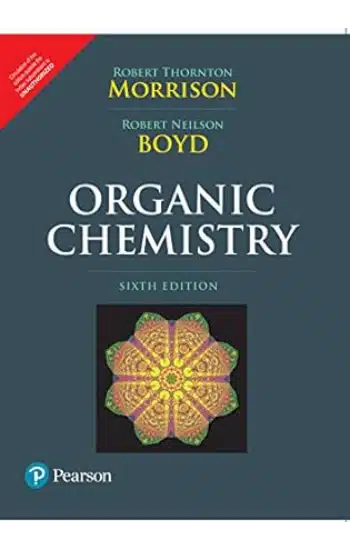
Save: 50%

Save: 50%
Organic Chemistry (6th ED)
Publisher:
| Author:
| Language:
| Format:
Publisher:
Author:
Language:
Format:
₹1,100 ₹550
Save: 50%
Out of stock
Receive in-stock notifications for this.
Ships within:
Out of stock
☆ ☆ ☆ ☆ ☆
| Book Type | |
|---|---|
| Signs of Wear | |
| Weak Binding | |
| Pages |
Pages are crisp and clean |
| Pen/Pencil Marks |
No pen or pencil marks |
ISBN:
Page Extent:
Organic Chemistry: An Introduction
In this classic introductory text, the authors aim to identify and highlight the new concepts of organic chemistry, selecting those that are fundamental to the subject. These concepts are then built into a cohesive framework, with the cornerstone being the understanding that chemical behavior is determined by molecular structure. Each topic is presented comprehensively and clearly, at a level suitable for beginning students.
The authors emphasize the relationships between seemingly unrelated facts and theories, revealing the broad and complex patterns underlying organic chemistry. Where possible, students are guided to discover these patterns themselves through problem-solving.
Features
- Molecular Structure Emphasis: Stresses the importance of molecular structure in understanding the properties and principles of organic chemistry.
- Spectral Analysis: Provides a wide variety of spectra for analysis.
- Visual Aids: Features four-color photographs throughout.
Contents
- Structure and Properties
- Methane: Energy of Activation, Transition State
- Alkanes: Free-Radical Substitution
- Stereochemistry I: Stereoisomers
- Alkyl Halides: Nucleophilic Aliphatic Substitution
- Alcohols and Ethers
- Role of the Solvent: Secondary Bonding
- Alkenes I: Structure and Preparation, Elimination
- Alkenes II: Reactions of the Carbon-Carbon Double Bond, Electrophilic and Free-Radical Addition
- Stereochemistry II: Stereoselective and Stereospecific Reactions
- Conjugation and Resonance: Dienes
- Alkynes
- Alicyclic Compounds
- Aromaticity: Benzene
- Electrophilic Aromatic Substitution
- Aromatic-Aliphatic Compounds: Arenes and Their Derivatives
- Spectroscopy and Structure
- Aldehydes and Ketones: Nucleophilic Addition
- Carboxylic Acids
- Functional Derivatives of Carboxylic Acids: Nucleophilic Acyl Substitution
- Carbanions I
- Amines I: Preparation and Physical Properties
- Amines II: Reactions
- Phenols
- Carbanions II
- Aryl Halides: Nucleophilic Aromatic Substitution
- α,β-Unsaturated Carbonyl Compounds: Conjugate Addition
- Molecular Orbitals: Orbital Symmetry
- Symphoria: Neighboring Group Effects, Catalysis by Transition Metal Complexes
- Heterocyclic Compounds
- Macromolecules: Polymers and Polymerization
- Stereochemistry III: Enantiotopic and Diastereotopic Ligands and Fats
- Lipids: Fats and Steroids
- Carbohydrates I: Monosaccharides
- Carbohydrates II: Disaccharides and Polysaccharides
- Proteins and Nucleic Acids: Molecular Biology
This book is an invaluable resource for students aiming to grasp the complexities of organic chemistry, providing a clear and structured pathway through the subject’s fundamental and advanced concepts.
Organic Chemistry: An Introduction
In this classic introductory text, the authors aim to identify and highlight the new concepts of organic chemistry, selecting those that are fundamental to the subject. These concepts are then built into a cohesive framework, with the cornerstone being the understanding that chemical behavior is determined by molecular structure. Each topic is presented comprehensively and clearly, at a level suitable for beginning students.
The authors emphasize the relationships between seemingly unrelated facts and theories, revealing the broad and complex patterns underlying organic chemistry. Where possible, students are guided to discover these patterns themselves through problem-solving.
Features
- Molecular Structure Emphasis: Stresses the importance of molecular structure in understanding the properties and principles of organic chemistry.
- Spectral Analysis: Provides a wide variety of spectra for analysis.
- Visual Aids: Features four-color photographs throughout.
Contents
- Structure and Properties
- Methane: Energy of Activation, Transition State
- Alkanes: Free-Radical Substitution
- Stereochemistry I: Stereoisomers
- Alkyl Halides: Nucleophilic Aliphatic Substitution
- Alcohols and Ethers
- Role of the Solvent: Secondary Bonding
- Alkenes I: Structure and Preparation, Elimination
- Alkenes II: Reactions of the Carbon-Carbon Double Bond, Electrophilic and Free-Radical Addition
- Stereochemistry II: Stereoselective and Stereospecific Reactions
- Conjugation and Resonance: Dienes
- Alkynes
- Alicyclic Compounds
- Aromaticity: Benzene
- Electrophilic Aromatic Substitution
- Aromatic-Aliphatic Compounds: Arenes and Their Derivatives
- Spectroscopy and Structure
- Aldehydes and Ketones: Nucleophilic Addition
- Carboxylic Acids
- Functional Derivatives of Carboxylic Acids: Nucleophilic Acyl Substitution
- Carbanions I
- Amines I: Preparation and Physical Properties
- Amines II: Reactions
- Phenols
- Carbanions II
- Aryl Halides: Nucleophilic Aromatic Substitution
- α,β-Unsaturated Carbonyl Compounds: Conjugate Addition
- Molecular Orbitals: Orbital Symmetry
- Symphoria: Neighboring Group Effects, Catalysis by Transition Metal Complexes
- Heterocyclic Compounds
- Macromolecules: Polymers and Polymerization
- Stereochemistry III: Enantiotopic and Diastereotopic Ligands and Fats
- Lipids: Fats and Steroids
- Carbohydrates I: Monosaccharides
- Carbohydrates II: Disaccharides and Polysaccharides
- Proteins and Nucleic Acids: Molecular Biology
This book is an invaluable resource for students aiming to grasp the complexities of organic chemistry, providing a clear and structured pathway through the subject’s fundamental and advanced concepts.
About Author
Reviews
There are no reviews yet.



Reviews
There are no reviews yet.